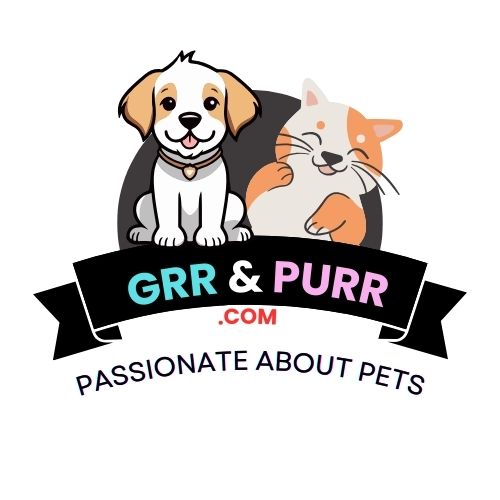Dogs have long been celebrated as our most loyal companions, but few moments capture the essence of their devotion more than the simple act of greeting us when we return home. Whether it’s been minutes or hours, their joyous welcomes transcend the passage of time, reflecting a pure, unfiltered love that few other beings can match. These emotional reunions are not merely rituals; they are profound expressions of attachment and identity, highlighting the unique ways different breeds manifest their loyalty and affection. Watching a dog’s heartfelt greeting is, in many ways, a glimpse into their souls—a testament to their unwavering bond with humans.
The Heartfelt Spectacle of Canine Greetings
There’s something universally enchanting about a dog who makes you feel like the most important person in the world the moment you step inside. The excitement is rarely muted—tails wag enthusiastically, bodies bounce or wiggle, and faces light up like they’re welcoming a cherished family member long absent. What strikes me most about these moments is the intensity of the emotions dogs display, which transcend mere recognition of your presence. It suggests a meaningful emotional connection, a joy that comes from a relationship built on trust, companionship, and shared experiences.
This emotional vibrancy varies across breeds, generating a rich tapestry of greeting styles. Labs and Golden Retrievers offer a blend of exuberance and emotional sensitivity, often mirroring our moods and reassuring us with their presence. Their greetings feel like warm celebrations, an invitation to share joy and solace simultaneously. On the more spirited end, Boxers and Australian Shepherds cannot contain their excitement, turning the homecoming into a full-on event filled with energetic displays of affection. Meanwhile, breeds like the Shih Tzu and Newfoundland provide a gentler counterpoint—quiet yet deeply moving, their reserved welcomes embody a soothing, protective loyalty.
What Loyalty Looks Like in Different Breeds
Diving into breed-specific behavior reveals how diverse expressions of loyalty can be. Take the Labrador Retriever: their entire body speaks happiness, often culminating in what one could call a “happy dance.” They are highly attuned to human emotions, offering companionship that is both joyful and empathetic. Their loyalty manifests in a persistent presence, following their beloved humans around the house as a steadfast companion.
Golden Retrievers elevate this by blending affection with physical closeness—leaning into hugs, nudging for attention—making every return home feel like a genuinely affectionate reunion. German Shepherds, while loyal and protective, deliver their greetings with a quieter dignity. Their focused, intelligent presence conveys seriousness and gentleness simultaneously—an impressive balance of companionship and guardianship.
Smaller breeds such as Beagles and Dachshunds prove that loyalty is not a function of size but of heart. Their excited barks and lively antics proclaim their joy with unmistakable clarity, transforming even short absences into triumphant returns. The quirky charm of Pugs and French Bulldogs injects humor and personality into their greetings, turning everyday moments into opportunities for laughter and warmth.
The Emotional Intelligence Behind a Dog’s Welcome
It’s easy to underestimate the cognitive and emotional depth involved in a dog’s greeting behavior. Behind the enthusiastic leaps and wagging tails lies an attuned awareness to human cues and emotional states. Dogs pick up on the subtle vibrations of our moods and body language, responding with behaviors tailored to comfort or celebrate. This ability underscores the profound bond between dogs and humans—a relationship fostered through millennia of co-evolution.
The unwavering attention of Border Collies and the gentle cuddles of Cavalier King Charles Spaniels reveal a nuanced emotional responsiveness, where loyalty is paired with empathy. These breeds don’t just acknowledge our presence; they celebrate our return as if it’s an event that catalyzes their emotional world. Their joy is not performative but genuine, emerging from deep emotional investment.
Why We Crave These Loyal Greetings
As someone who values emotional connection, I find the richness of a dog’s greeting indispensable in the human experience of homecoming. After a long day or a brief separation, the enthusiasm of a loyal dog reassures us that we belong, that we are loved unconditionally. This ritual is more than routine; it is a psychological balm, a moment where worries dissipate and the simple joy of presence prevails.
Dogs teach us that loyalty is not measured in grand gestures but in consistent, heartfelt moments. Their greeting styles—whether quiet and tender or wildly exuberant—remind us of the beauty in emotional expression and connection. To be greeted with such earnest affection invites us to slow down, to appreciate the bonds we forge, and to recognize the profound comfort found in being missed and wanted.
In the tapestry of human-animal companionship, these greeting moments stand out as crowning jewels—celebrations of loyalty that infuse daily life with meaning and warmth. Each dog’s delight in seeing us again is a reminder that our relationships, at their best, spark joy and create belonging, no matter how long or brief the absence has been. This unique canine capacity to turn an ordinary return into a personal milestone elevates their role in our lives beyond pets, making them unequivocal holders of our hearts.

